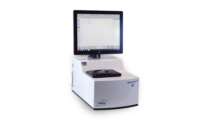Many bakery producers, when it comes to keeping flour quality in check, follow specifications set by millers. According to Arnaud Dubat, business development manager with KPM Analytics, bakery professionals could improve flour quality, elevate the finished product, and eliminate costly waste and downtime by taking matters into their own hands.
To learn more, Snack Food & Wholesale Bakery recently connected with Dubat.
Jenni Spinner: Could you please tell us how bakery producers typically specify their flour and correlate the product results to their flour?
 Arnaud Dubat: Without generalizing, we observe that most of the bakers, when they do have a COA (certificate of acceptance), are basing them on “common practice.” For example, they will include water absorption, stability, protein content, and falling number, to name a few. These are indeed interesting parameters but are we sure they really matter for a specific production line?
Arnaud Dubat: Without generalizing, we observe that most of the bakers, when they do have a COA (certificate of acceptance), are basing them on “common practice.” For example, they will include water absorption, stability, protein content, and falling number, to name a few. These are indeed interesting parameters but are we sure they really matter for a specific production line?
It is always interesting for the bakers to ask themselves “who decides to include these parameters in your specs?” "Why these parameters and not others?” “Who decides the level of specifications and the acceptable tolerances?” and the most important one “Is your flour conforming to specifications, but still presenting issues online?”
This is the first thing to consider: Why these specifications? Then, there is (and too often there is NOT) the control. Too many bakers do not have the minimum equipment to test the incoming flour. They look at the paperwork (and often without seeing the analytical curves) and if numbers are within the range…they accept it. The main explanation for this behavior is to say, “flour quality control is performed by my miller.” Correct, but if there is something wrong, the problems on the production line, and the subsequent costs, will be on the baker. In business, trust does not exclude control.
JS: What are some of the issues with such an approach? What can go wrong when relying on millers for such info?
AD: The limit of this approach is that it works as if the process, the recipe, the ingredient type, and the human skills of the bakers were all the same everywhere. When someone says, “This is a good bread flour because it is high in protein,” it says implicitly that this flour will always perform well whatever the production conditions are. It gives the feeling that if there is something wrong, the flour is to blame. Well, it is not that simple.
The millers are not baking the product in the conditions the industry does. The millers are doing a great job providing flours that are quite adaptable. If, as a baker, you want to make a specific product, by changing the recipe (less salt, more sugar, less fat…) all of this will require a different flour. But how can a miller define what is required? How can he know what would be the best for this specific baker?
JS: Could you please share how producers can turn the tables, and take control of their flour quality?
AD: Today’s way of looking at flour quality is to think from grain to flour. To simplify, we basically reduce our vision to “hard wheat will give strong flour, good for bread,” or “soft wheat will give weak flour good for biscuits and cookies” as examples. Easy to explain and understand but certainly not optimal when we can regularly hear bakers complaining that, despite all the tests done by the millers, they still experience too many issues and production loss. So, what can we do?
Our proposal is to return the thinking from “grain to flour” to “final product to flour.” In other words, it is all about helping the baker understand what is good for him and communicating it to their Miller. Note that this approach is also positive for the miller who will then receive clear indications about what to really focus his attention on for maintaining a high quality standard. The concept is based on the observation of the baking process performance. If, for a given production line, a flour allows to make the perfect end product, without any production issues: this is a good performing flour. If the product is not conformed and or if production was complicated (stickiness, dough elasticity), this is a nonperforming flour.
Tools like the Mixolab 2 and its Mixolab Profiler have already shown their potential to characterize well-performing flour and communicate these specifications to millers. As the information is complete and linked to the production line, the Profiler proves to be more efficient than traditional specification based on common “know-how.”
JS: What resources can KPM Analytics provide to help them get a handle and make the case for bakers having better control of their flour?
AD: KPM Analytics offers a unique solution, helping to take control of the process. Whatever the final product is, we always have three phases:
- The mixing stage: transforming dry powders into a continuous dough system. This is a critical stage: how much water to add? How long to mix? How is the dough at the end of this phase? Here again, we have a series of tools helping to ensure consistency and objectively measure variations.
- The dough shaping: This is defined as the transforming a dough mass into little pieces that can eventually be proofed. The mechanical stress, along with the dough properties can make this phase soft and easy, or really complicated. Online near-infrared (NIR) sensor technology and dough rheological tools are a great help to ensure consistency or measure variations.
- The final transformation: This covers all methods for transforming the Dough into the final product (baking, frying, steaming, etc.). After this phase, the product must conform to customers’ expectations otherwise it is lost. KPM Analytics offers objective vision tools to monitor the final product characteristics. This is how we define the “perfect product.”
Once the process is understood, it becomes easier to segregate the flour lots “performing well” from the others. Once this filter is established, it is used to develop specifications to produce the best possible products consistently. The difference is that these specifications are considering the specific baker’s real needs…and not decided by someone else.
JS: Do you have anything to add?
AD: This innovative approach makes great sense in a world where baking plants grow bigger every day. If you consider that most of the laboratory tools used for current specifications were developed 60-100 years ago, you also might need to remember that, at this time, bakeries were way smaller. As a matter of fact, 80 years ago, the miller had the responsibility to provide a “close enough” flour, and if the performance was not optimal, it was the baker’s role to adjust.
Today, most plants do not have the time (and sometimes the expertise) to correct online and prefer to have a QC system allowing to better define flour’s quality considering the plant specificities. This is a very exciting moment and KPM Analytics, thanks to its products but also for an unrivaled expertise built over years with the different brands. KPM Analytics is the only provider able to bring bakers a full set of solutions, adaptable to baker’s needs.
Related: Consumer demands, producer needs impact dough handling tech




